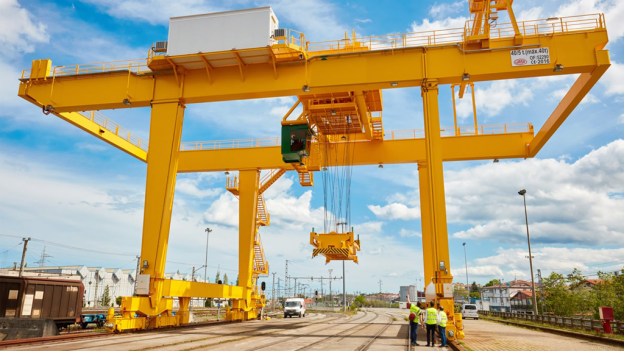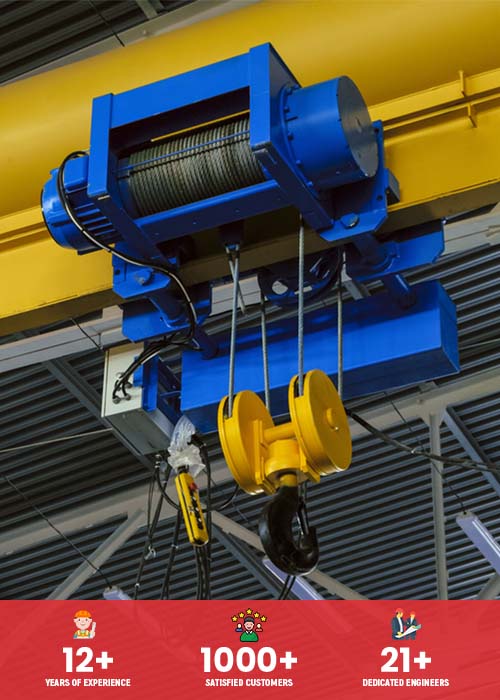Methods To Calculate The Weight Of A Load Before An Overhead Lift

Determination of a load of a substance before lifting it using a crane is vital for the safety and security of operators and workers at the site and the lifting machine itself. The total weight of the load is calculated, including every part of the lifting machine such as hook block, ropes, lifting beams, hoist rings and other hardware. The electric winch manufacturers in India says that this is one of the most crucial methods because not only does it make the whole process streamlined, but also safe. In this article, we are going to explain various techniques for the calculation of the weight of the load.
Simple Methods
There are many methods in which you do not need to do any calculations or actual weighing for measuring the weight of the load. These simple methods make the weighing process faster and simpler.
Look For Any Mark On Load
Try to search for any mark related to the weight of the manufacturer company or any other middle person who weighs it. This is the first and simplest step among all.
Similar Loads
There are many loads which are similar to your everyday practice, so for these types of objects, you don’t need any measurement every time the load arrives. You can weigh once and use the same data every time a similar load arrives.

Refer To Bill Or Shipping Documents
The bill or shipping documents definitely contain some information about the weight of the load delivered to your site. So, this quick check can not only save time but efforts too.
Use Industrial Scale
For some lighter weights, you can use standard industrial scales which are readily available around you. These scales do not require much effort and time and that’s why this method is recommended over complex techniques.
See Catalog Data
If the product is of some famous company or there is a machine, then the required information can be checked through paperwork provided by the manufacturer and the website of the provider. Also, the data will be provided on the brochure of the item. So, looking at the catalogue data can be a faster way to analyse the weight of product.
Manually Calculating Weight
If even after following the above ways and steps, you are unable to know the load and weight of the substance, then you can calculate the weight using the following steps. In these steps, you need to do some basic calculation for determining the weight of the load.
Step 1
In this step, you need to find the volume of load.
For Rectangular Shape
For a cuboid-shaped or rectangular shaped
Volume=length*breadth*height.
For Cylindrical Shapes
Volume=3.14*radius*radius*height.
For Complex Shapes
For shapes which are not a perfect rectangle or cylindrical break them to understandable form. You can break them into two, three or more measurable shapes.
Step 2
Determine the material for which you want to calculate weight such as aluminium, glass, and brass etc. After that, find the approximate
Weight per cubic meter value, which is easily available on the internet. You can also explore formulas and other things on the internet if there is some doubt.
Step 3
Now multiply the weight per cubic meter value to the volume, and you will now get the weight of that substance.
Installation Of Dynamometers And Load Cells In Lift Machine
These are a few devices that are attached in Riggins to measure the weight of the load directly using some needle by pressure or a digital machine which directly sends the data to a monitor. Use of these devices is a highly efficient and accurate method for determining the weight of any load. Also, overload sensors are available with many load cells and dynamometers, and these sensors alert the operators for safety when it seems like the load cells are being overloaded. By using these devices, you will be able to save a million on your site.
Though the process is quite simple, it is always best to follow the maintained and celebration instructions provided by manufacturers. Following the right instruction manual will ensure safety, correct measurements, and let you understand your machine’s compliance.
Why is Load Calculation Important in Overhead Lifting?
✅ Prevents Overloading – Protects cranes from exceeding their rated capacity.
✅ Ensures Worker Safety – Reduces risks of crane failure or load drops.
✅ Improves Equipment Lifespan – Prevents wear and tear on cables, motors, and structures.
✅ Complies with Safety Standards – Industrial norms like OSHA and IS 3177 require proper load assessments.
Did you know? In India, industries lose ₹5-10 lakh per year due to damages caused by lifting unknown weights!
How to Choose the Right Load Calculation Method?
With so many advanced techniques, how do you decide which one to use? Here’s a quick comparison:
| Method | Best for | Industries |
| 3D Scanning | Irregular loads | Aerospace, Automotive |
| Strain Gauge Sensors | Precision lifting | Steel, Construction |
| Density-Based Calculation | Bulk materials | Cement, Logistics |
| AI & Machine Learning | Automated lifting | Warehousing, Robotics |
| Hydrostatic Weighing | Liquid loads | Pharma, Chemicals |
📌 Pro Tip: For heavy industrial applications, a combination of multiple methods ensures the highest accuracy and safety.
Lifting unknown or miscalculated loads is one of the biggest risk factors in crane operations. While basic methods like load cells and weighbridges are useful, modern industries need advanced techniques to ensure precision and efficiency.




